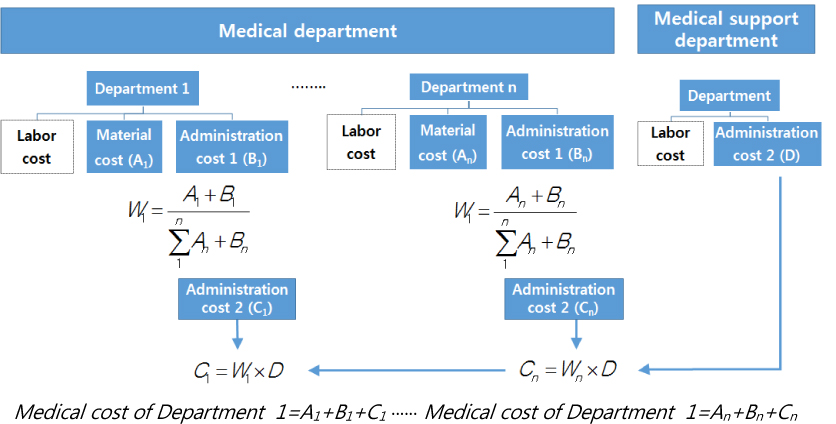1College of Medicine, Wonkwang University, Korea.
2Department of Nursing, Changwon National University, Korea.
Copyright © 2017 Korean Academy of Nursing Administration
This is an open access article distributed under the terms of the Creative Commons Attribution Non-Commercial License (http://creativecommons.org/licenses/by-nc/3.0/), which permits unrestricted non-commercial use, distribution, and reproduction in any medium, provided the original work is properly cited.
This work was supported by the Korean Academy of Nursing Administration Research Fund in 2015.


*When calculate total number of patients, the number of outpatients was devided by 12 based on Enforcement Rules of Medical Laws 38.
*Labor cost was excluded.
Administration cost2 is the ratio of cost to the sum of material and administration costs1 for all divisions; *Included in nursing cost.
*When calculate total number of patients, the number of outpatients was devided by 12 based on Enforcement Rules of Medical Laws 38.
*Labor cost was excluded.
Administration cost2 is the ratio of cost to the sum of material and administration costs1 for all divisions; *Included in nursing cost.